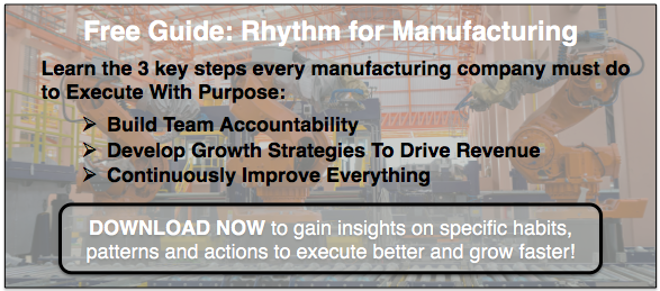We have an internal team that meets weekly and goes by the name “CANI." Although I was trained as an  industrial engineer, this was a term that I did not know. CANI stands for continuous and never-ending improvement and was brought to us by our own Melissa Enriquez. Our CANI team has accomplished a lot by meeting weekly with different groups to work on and develop new processes. I just mentioned this in the submission I wrote for our annual culture book and thought, it might be a good time to write a little about LEAN and one of the main objectives of the Toyota Production System (TPS) developed by Taiichi Ohno and Eiji Toyoda.
industrial engineer, this was a term that I did not know. CANI stands for continuous and never-ending improvement and was brought to us by our own Melissa Enriquez. Our CANI team has accomplished a lot by meeting weekly with different groups to work on and develop new processes. I just mentioned this in the submission I wrote for our annual culture book and thought, it might be a good time to write a little about LEAN and one of the main objectives of the Toyota Production System (TPS) developed by Taiichi Ohno and Eiji Toyoda.
The main objectives of TPS are to design out overburden, inconsistency and eliminate waste. Toyota has become a leader in their industry by deploying these concepts. I had the chance to tour one of the Toyota factories in the USA a few years ago and got to experience first hand how seriously they take LEAN. While we were entering the building to get ready for the tour, they had us line up in two groups and organize ourselves alphabetically so they could process us more efficiently. You got to love Toyota!
Let’s take a look specifically at the seven wastes or “Muda” as they are called in Japanese.
- Waste of over-production. This is making more product before it is actually required. Doing this can cover up quality issues and lead to obsolescence as well as tie up large amounts of capital. Just in Time (JIT) is the opposite because every item or transaction is done only when needed.
- Waste of time on hand. This means waiting for an upstream process to deliver, or for a machine to finish processing, or for a supporting function to be completed, or for an interrupted worker to get back to work. Time lost cannot be recovered. Look for ways to eliminate delays.
- Waste of transportation and handling. This is any unnecessary movement of the thing being processed. It can cause damage and deterioration. Map workflows to develop the most efficient design and eliminate any waste that does not add value and is not necessary.
- Waste of processing. This means adding value to the product or service that is not required or expected by the customer. Make sure you understand your customers’ requirements and what truly adds value. Also, don't rely on quality inspection rather than designing the product right from the start to produce the desired results.
- Waste of stock at hand or Work in Progress. Inventories awaiting further processing or consumption are a direct result of over-production and waiting. Again, this can hide problems, increase lead time and raise the cost of inventory on hand tying up valuable capital. Practice using Kanbans and JIT concepts.
- Waste of movement. This refers to unnecessary motion of employees or not developing the most efficient way to do things. Consider good ergonomics and safety and try to find the most efficient way to accomplish the task at hand. Fredrick Winslow Taylor called this the one best way. Eliminate any unnecessary motion that does not add value to the product or service.
- Waste of making defective products. Quality problems lead to rework or scrap and add tremendous costs to doing business. Use employee involvement and continuous process improvement, or CANI in our case, to reduce defects and eliminate waste and design products for manufacturability with the most efficient processes possible.
I hope these7 deadly wastes spurred some thinking on your your end. Go ahead, make my day and take a “Gemba” walk!
Gemba is the term for personally observing work where it is happening. The original Japanese term comes from gembutsu, which translates as “real thing" or sometimes "the real place."
Good luck, Alan
Photo Credit: iStock by Getty Images





